It is a formal document that contains the contact information of an individual’s close family members or friends who can be contacted in case of an emergency.
Essentially, this form ensures that the employer or the HR department can swiftly communicate with the appropriate people in the event of a crisis or a tragedy that involves the employee. With this information, you can effectively ensure the safety and well-being of your workers.
Typically, it contains the name and contact information of the employee. It also includes the name, relationship, phone number, email, and address of the emergency contacts of employees.
The form may also include a voluntary disclosure about any health conditions, such as allergies, previous surgeries, and any relevant information that can be necessary during an emergency.
Note that the easiest and fastest way of creating these contact forms is by using templates. This ensures that the information contained in the form is accurate, consistent, and complete. Furthermore, you can design and create your own form by using word processing software.
This article will discuss when to use an emergency contact form for employees. It also focuses on the information to include when crafting the form, tips to consider, and legal considerations for using these forms.
Free Contact Forms
Given below are the employee contract templates:
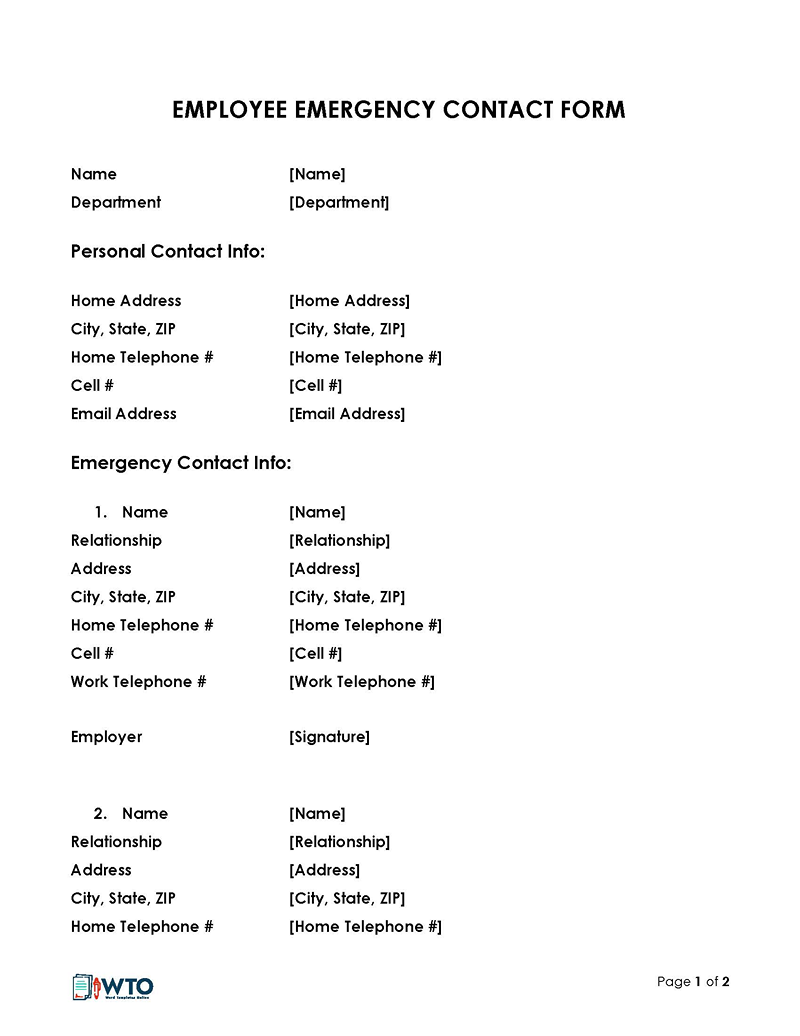
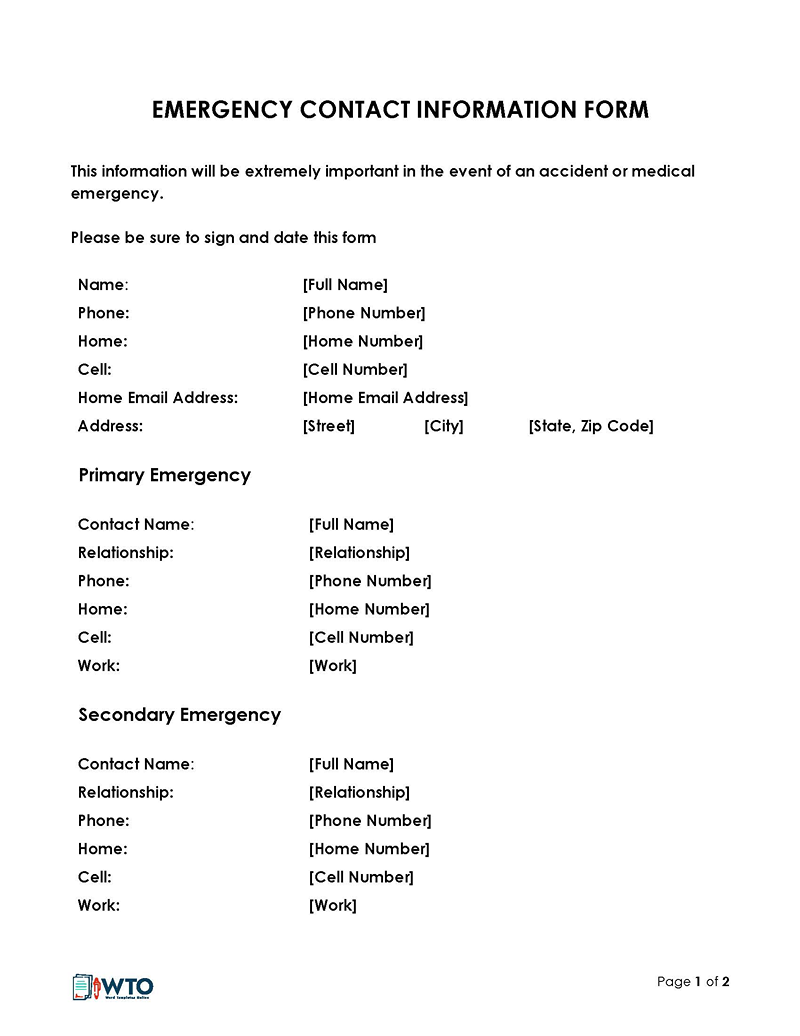
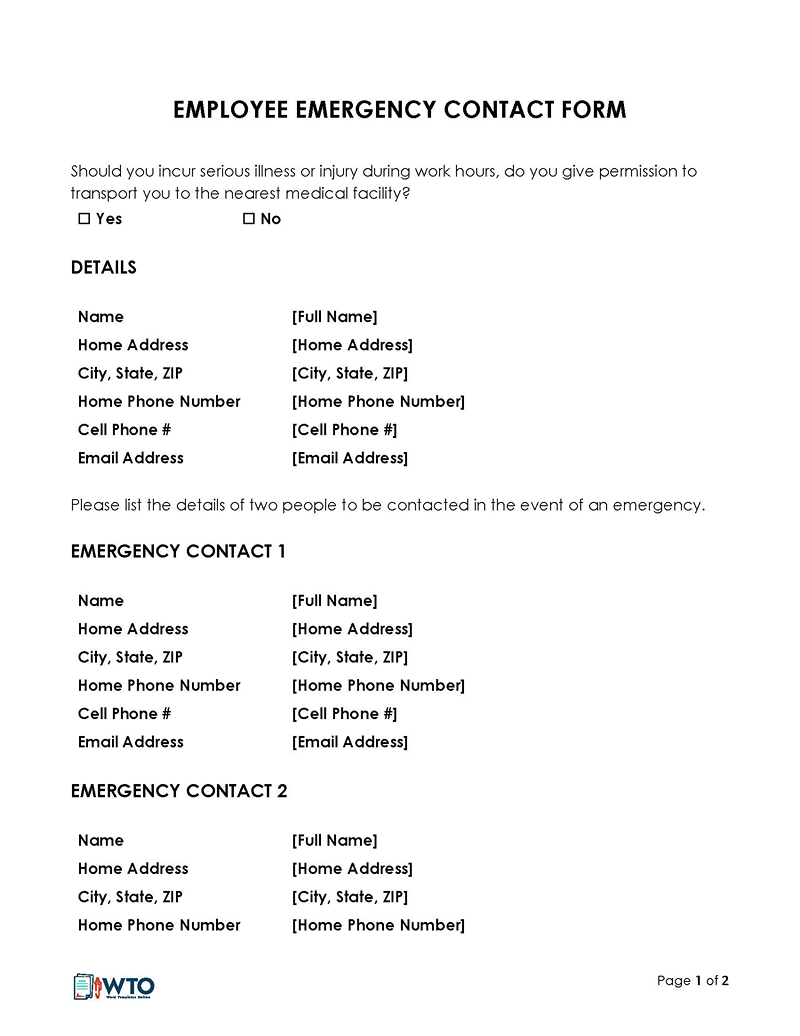
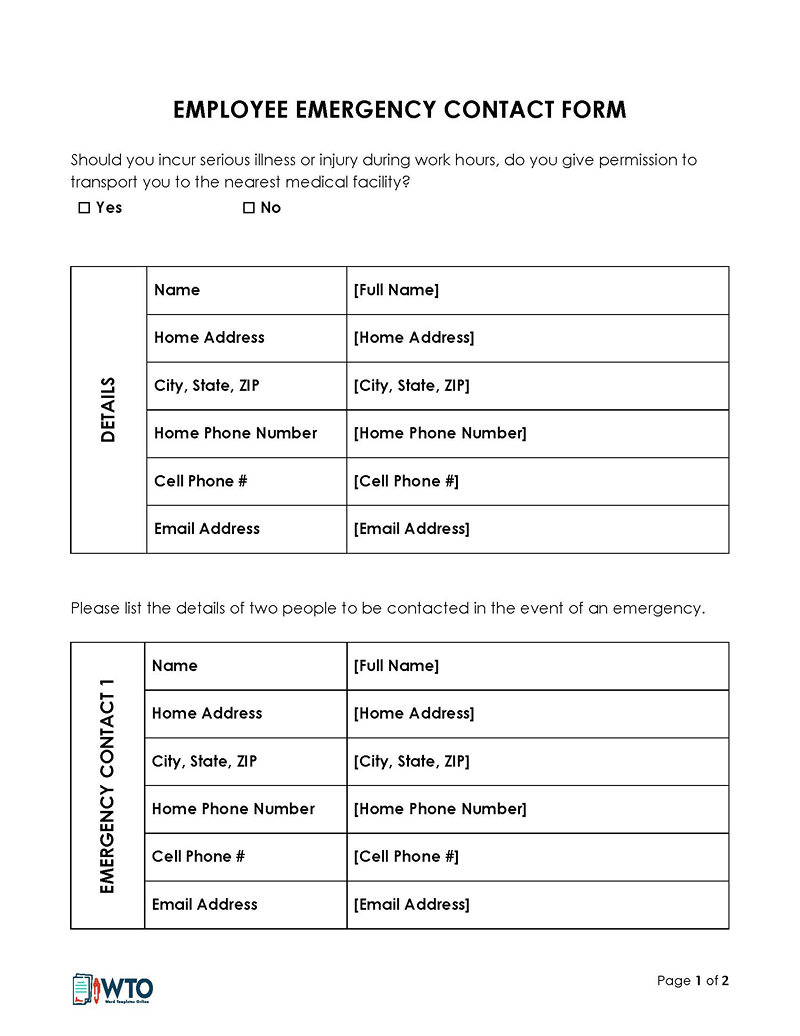
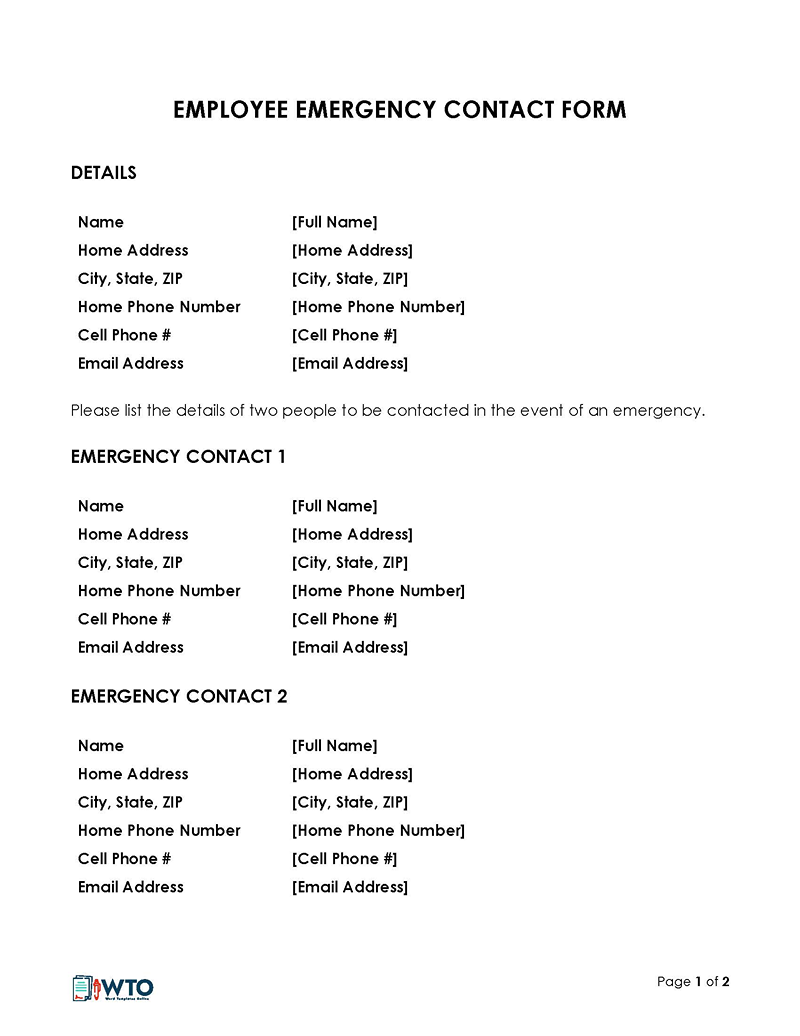
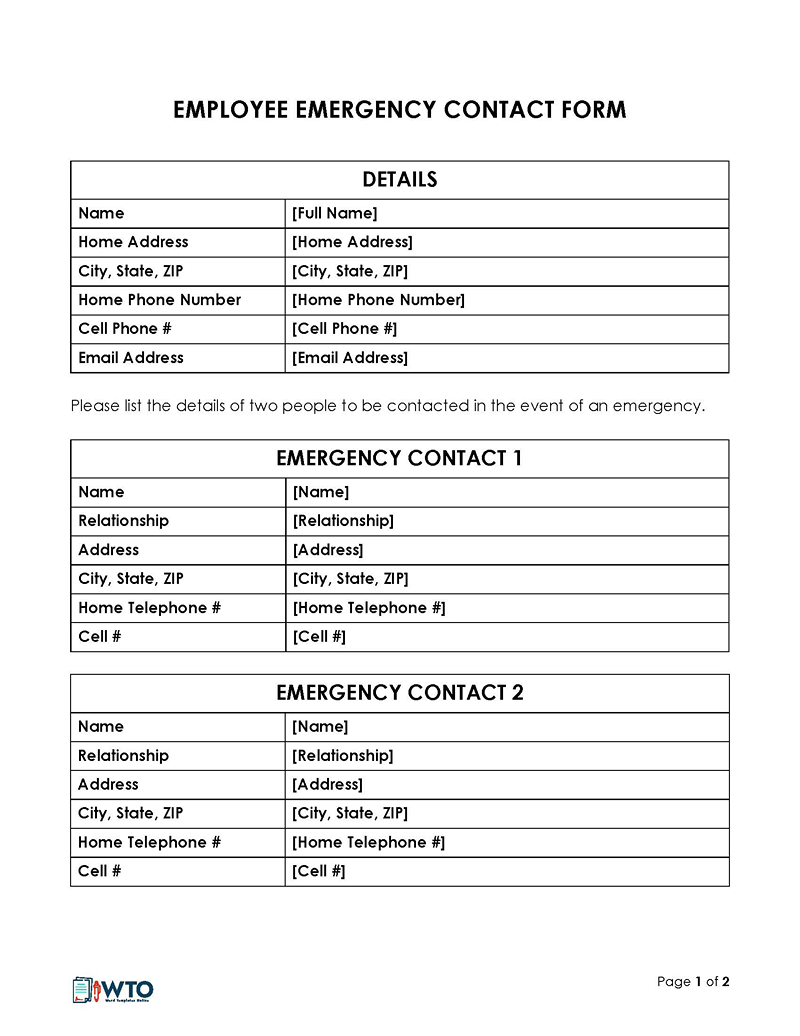
When is an Employee Emergency Contact Form Needed?
Several instances will require you to use this form. Below are situations that will demand the use of this form:
Medical emergencies
Employees may experience sudden medical emergencies or illnesses while at work. Having their emergency contact details on hand enables you to promptly inform their designated contacts and help facilitate necessary medical attention or arrangements.
In case of work emergencies like a fire, building collapse, explosion, security breach, or gas leak, you can contact the employee’s emergency contact to notify and update them about the tragedy and confirm the employee’s state.
Emergency evacuations or natural disasters
During emergency evacuations or situations involving natural disasters, having access to emergency contacts allows you to communicate important safety instructions, updates, or evacuation procedures to their designated contacts. This ensures a coordinated and effective response to such events.
Compliance and legal requirements
In some jurisdictions, employers may be legally required to maintain emergency contact details for their employees as part of occupational health and safety regulations. Ensuring compliance with these requirements helps protect both the employees and the employer.
These two documents are essential as they serve similar purposes. However, the main difference between these forms lies in their scope and focus.
This contact form refers specifically to the emergency contact information collected from employees in the workplace. It contains the details of an employee, such as their name, contact information, job position, department, work location, and information about their family or friends who can be contacted in case of an unforeseen situation to ensure the well-being of their employee. In addition, it can only be accessed, used, and managed by authorised individuals, such as the Human Resources Department.
On the other hand, this contact form can also be used for other organizations such as schools, hospitals, etc. It is often used by schools, community organizations, or event organizers to gather contact details of participants or attendees. The purpose of a general contact form is to have a central record of emergency contacts that can be used in case of any emergency or critical situation that may arise during the event or activity. The document contains the personal details of an individual and details of the person(s) who can be contacted in case of an emergency.
Information to be Included in an Employee Emergency Contact Form
The following are details to include when drafting this form for your employees:
The employee’s information
The employee’s information should be outlined clearly and accurately within the form. Therefore, the form should indicate the employee’s name, date of birth, age, department, job position, valid phone number, and email address.
Home address
The form should include the residential address of the employee. This includes their physical home address, i.e., house or apartment number, city, state, and zip code.
Primary emergency contact
This section captures information about the primary emergency contact person for the employee. It includes the contact person’s full name, their relationship to the employee (e.g., spouse, parent, guardian), phone number (mobile and/or home), and email address. This contact person is usually the first point of contact in the event of an emergency involving the employee.
Secondary emergency contact information
Secondary contacts are individuals that can be contacted in case the primary emergency contacts cannot be reached. Therefore, ensure the form has their name, phone number, and email address accurately. The form should also specify how the employee and designated contact person are related to one another.
Voluntary additional (health) information
Voluntary health disclosure refers to the option for an employee to provide additional health-related information that may be relevant in the event of an emergency. While the primary purpose of an emergency contact form is to gather the contact details of individuals to be notified during an emergency, some forms may include an optional section where employees can voluntarily share important health information. This includes any previous and current illnesses, surgeries, medications, allergies, and blood groups.
note
A form for gathering information about individuals to be contacted in an emergency does not impact your company’s liabilities as an employer. It is intended to help you inform an employee or the employee’s next of kin about an incident at work. Therefore, using this form does not automatically make you accountable for the incident.
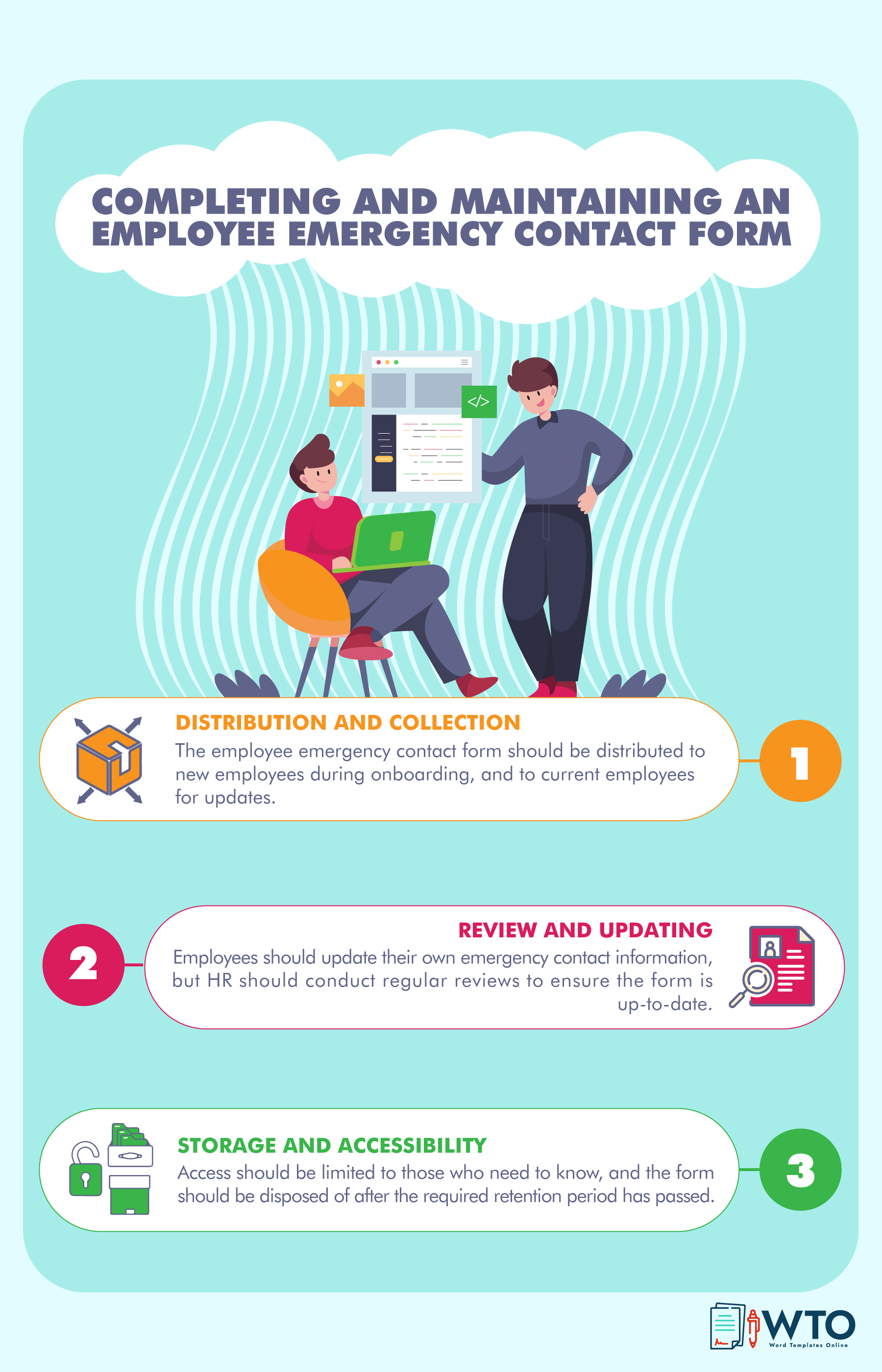
Tips for Using an Employee Emergency Contact Form
The following are tips to consider when using an emergency contact form for your employees.
Communicate the purpose of the form
Explain clearly the importance and purpose of the document to the employees. You can inform them through email, meetings, or posters at work. Outline and explain why the information is necessary, its significance, and how it will be used during an emergency. This way, you will help them understand why it is important for them to provide detailed, up-to-date, and accurate information.
Easy access to the form
The document should be easily accessible to the employees at all times. Note that this form should be accessed and used by authorized personnel only. It is recommended to store this form in an electronic format and make it available on the company’s intranet or employee portal.
Make the form easy to use and understand
Use simple and easy-to-understand language when creating the form. Additionally, the general structure of the document should enable the use of icons or pictures, which can help convey the information in a simpler manner. Avoid jargon or complex terminology that could confuse employees. Use headings and subheadings to separate different sections and make the form visually organized.
EXAMPLE
Contact details: (e.g., Phone number, email, or home number)
Conduct regular drills and training exercises
Regular drills and exercises will equip the employee with adequate knowledge on preserving, accessing, and using the emergency contact form. That means that you should conduct mock crises to test the effectiveness of these forms. This way, you can easily identify the areas that require changes. In addition to making necessary improvements, you can also update the contact information.
Ensure confidentiality
Emphasize the confidentiality of the information provided on the form. Assure employees that their personal information will be securely stored and only accessed by authorized personnel in the event of an emergency.
Regularly update the form
Encourage employees to review and update their emergency contact information periodically or whenever there are changes. Provide a reminder or set specific times during the year to prompt employees to verify and update their details.
Legal Considerations for an Employee Emergency Contact Form
This contact form is a formal document used to ensure the well-being of employees in the event of an emergency. Note that policies, laws, and measures govern who, how, and when these forms can be accessed and used.
The following are some legal considerations that you should be aware of when creating and using such a form:
Compliance with data protection laws
When creating the form, it is crucial to adhere to and follow the set data protection laws, such as the California Customer Privacy Act (CCPA) or the General Data Protection Regulation (GDPR) in Europe. These laws explain that you can only collect, use, share, manage, and store employee information with their consent and approval. Furthermore, you must inform your employees about how you intend to use and protect their personal data.
Confidentiality and access to information
There should be policies and measures in place that you will use to protect confidentiality and access to employees’ personal information. Note that only authorized personnel, such as HR managers and government officials, can access and use the information collected through this document.
Data retention
Determine how long the emergency contact information will be retained and establish a policy for securely disposing of it when it is no longer needed. Retention periods may vary depending on legal requirements and organizational needs.
Consent for medical information
If the emergency contact form includes a voluntary health disclosure section, obtain explicit consent from employees to collect and use their health-related information. Clearly explain how this information will be used and stored and ensure compliance with applicable medical privacy laws, such as HIPAA in the United States.
Form Samples
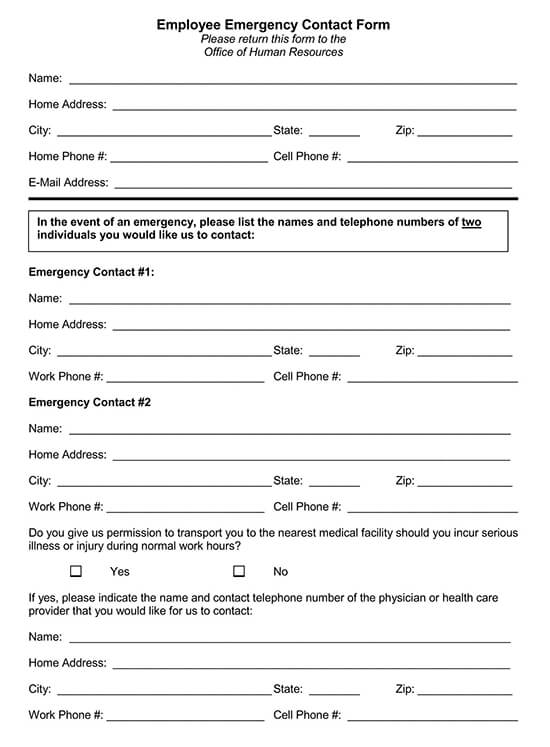
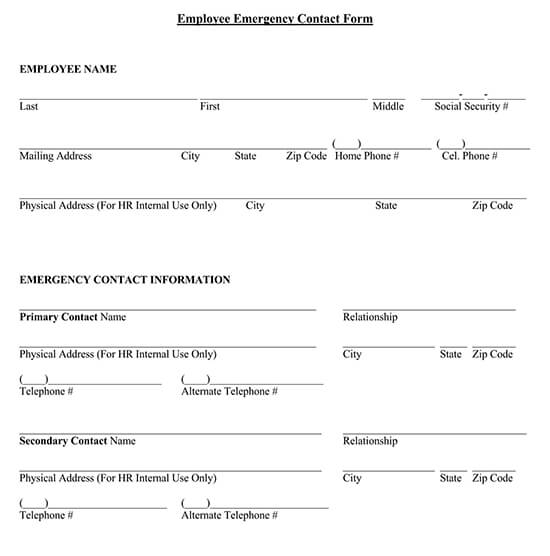
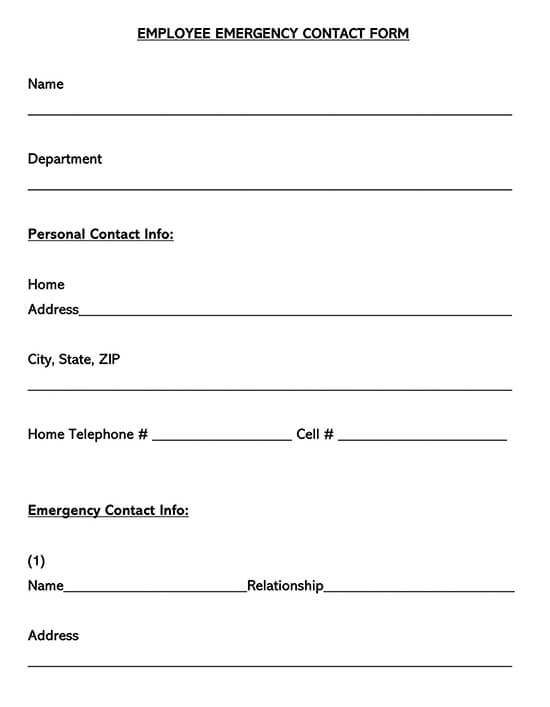
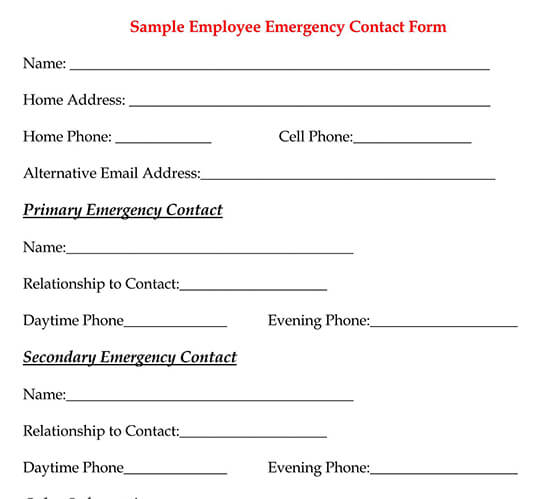
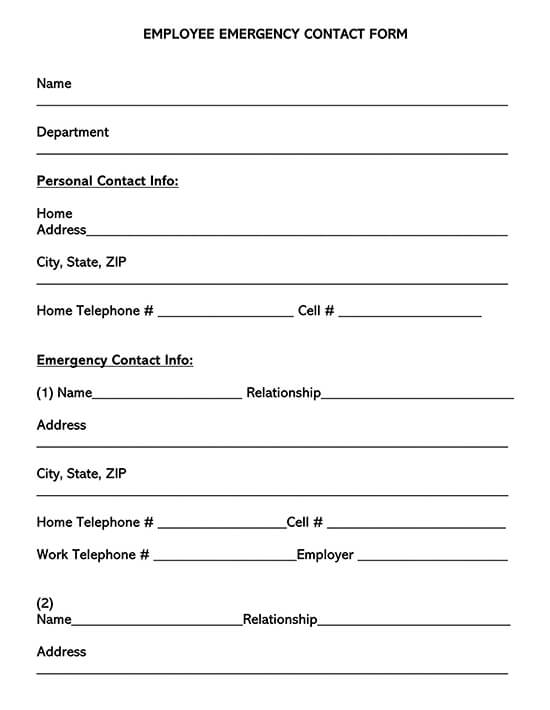
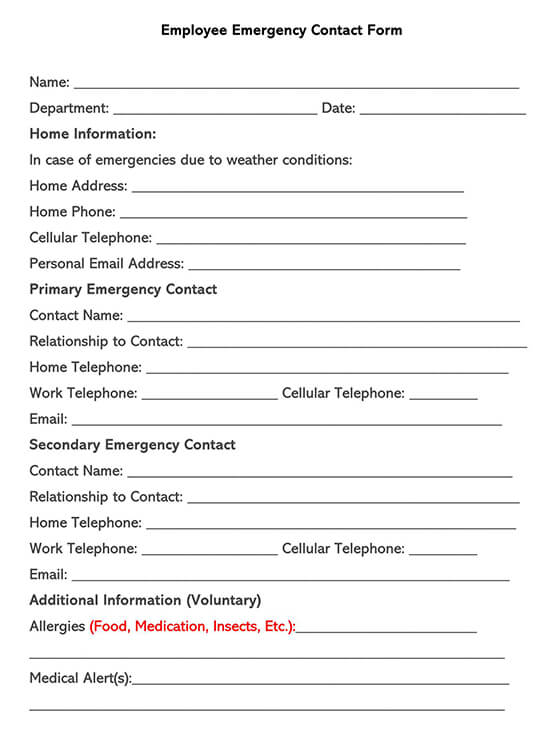
Frequently Asked Questions
An employee emergency contact form contains the following information:
• The name of the employee
• The contact information of the employee and the next of kin
• The employees’ home address
• The job title of the employee/department of work
In any work environment, accidents are bound to happen. Unfortunately, when they happen, the employer will use the Employee Emergency Contact Form to reach out to the employees’ next of kin to alert them of the incident.
• When an employee gets sick at work
• When an employee engages in a work-related accident
• When the employee suddenly suffers from a heart attack
Yes. You can put the name of your fiancée on this Form. However, it’s recommended that you also add a close individual, such as parents or siblings, as they might know your health conditions well.
Summary
An employee emergency contact form plays a vital role in ensuring the safety and well-being of employees during emergency situations. By gathering accurate and up-to-date contact information for both employees and their designated emergency contacts, employers can effectively respond to unforeseen circumstances, promptly communicate with the appropriate individuals, and provide necessary assistance when needed. Only authorized individuals should access and use these documents to protect your workers’ privacy and confidentiality. Ensure that the information is current, reliable, and easily accessible. You can use printable templates to create an accurate form.












